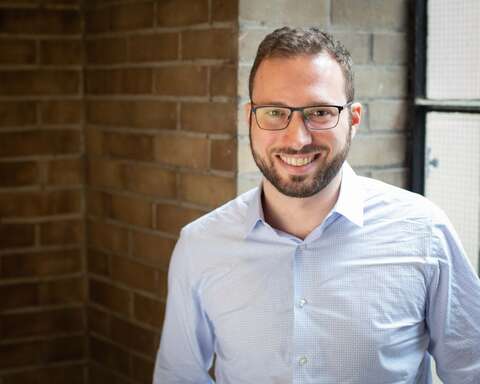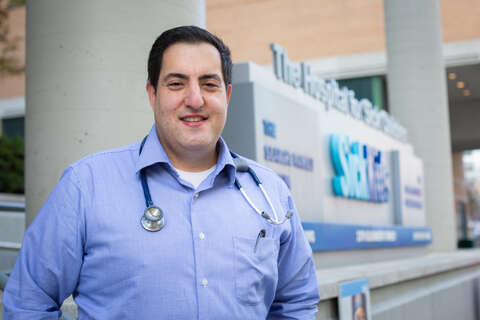U of T Scientists Find Lack of Fluid Flow in Glaucoma
University of Toronto researchers have shown that fluid which flushes out the eye’s optic nerve doesn’t flow properly in mice with glaucoma – one of the world’s leading causes of permanent blindness.

The researchers, ophthalmology professors Neeru Gupta and Yeni Yucel, and student Emily Mathieu, were the first to find, recently, that cerebrospinal fluid from the brain penetrates the optic nerve, rather than simply surrounding it. Now, the team has uncovered that in a glaucoma model, far less of this fluid enters the optic nerve than in mice without glaucoma.
“This casts an entirely new light on glaucoma,” said Gupta, who is Chief of Glaucoma at the Faculty of Medicine and a clinician-scientist at St. Michael’s Hospital. “If fluid is not getting into a nerve and that fluid exchange - good things getting in, bad things getting out - is disrupted, maybe that's part of the reason the optic nerve is damaged in glaucoma.”
Glaucoma is often undetected in its onset and once a patient receives the diagnosis, progressive vision loss is inevitable. The disease causes gradual degeneration of the optic nerve. While treatments help to protect vision, currently, there is no cure.
This is a puzzle the team have dedicated their research to solving. She and Yucel discovered nearly a decade ago that the eye has a lymphatic system, which clears fluid and waste out of tissues. The inability to clear fluid from the eye causes a buildup of pressure, and pressure is a major risk factor for glaucoma.
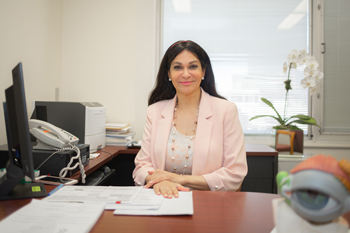
“There's much more to this disease than we would like to think,” Gupta says. “Right now, we are able to tackle pressure in the eye that's measureable. If we can drop it, we slow progression. It's not a cure.”
The current finding is the first step to a new body of research, says Yucel.
“Now that we know there’s a problem, we need to drill down to understand the elements of it. It may even explain space flight-associated neuro-ocular syndrome (optic nerve fluid shifts and vision impairment suffered by astronauts in space missions)” says Yucel, who is also a professor in the Department of Laboratory Medicine and Pathobiology.
Next, the team will explore why the flow is disrupted and what impact this has on the optic nerve.
“I see many people who are slowly losing their sight from glaucoma,” says Gupta. “Despite many of our treatments, it’s sometimes not enough. This discovery potentially offers new hope. As long as we keep looking, there’s hope for a better future for our glaucoma patients.”
--Ana Gajic and Heidi Singer

Optimize this page for search engines by customizing the Meta Title and Meta Description fields.
Use the Google Search Result Preview Tool to test different content ideas.
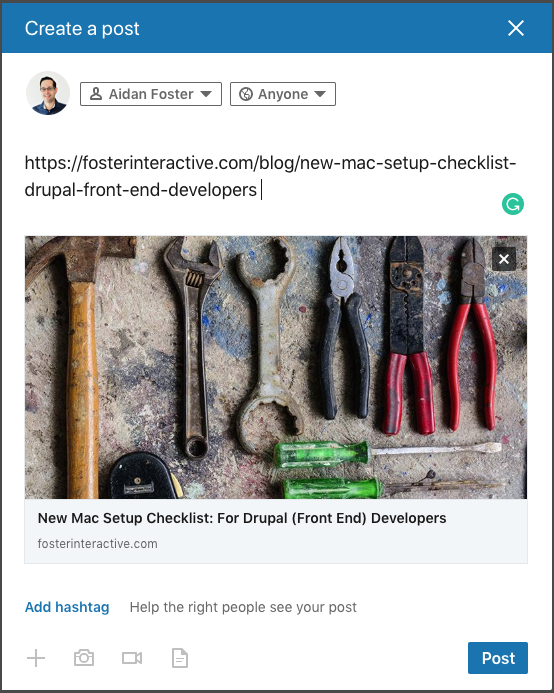
Select a Meta Image to tell a social media platform what image to use when sharing.
If blank, different social platforms like LinkedIn will randomly select an image on the page to appear on shared posts.
Posts with images generally perform better on social media so it is worth selecting an engaging image.

Filipino-Heritage Medical Students Honour CMA President Gigi Osler
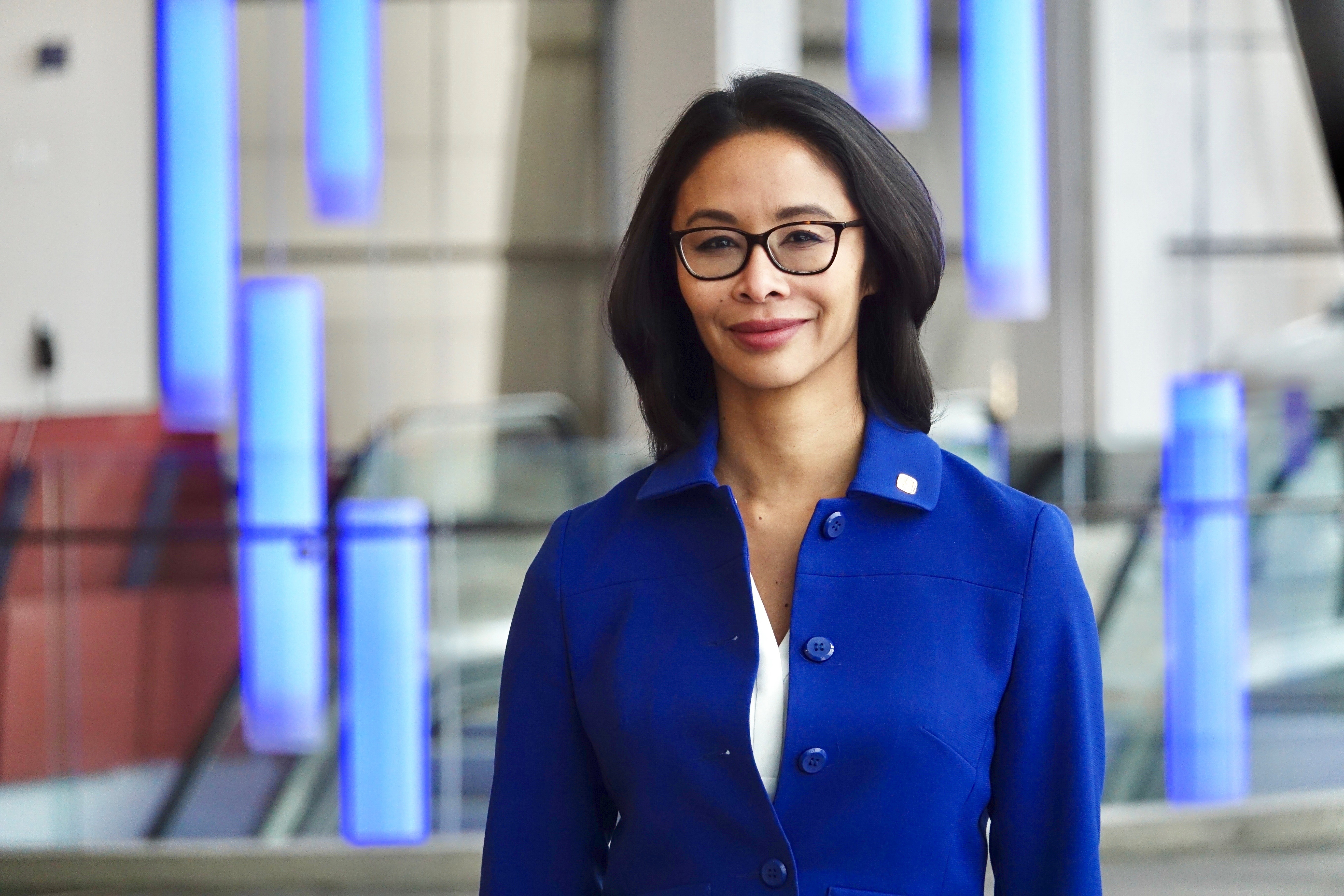 Medical students of Filipino heritage will honour one of their own today, when Dr. Gigi Osler visits the Faculty of Medicine to speak about the importance of diversity in medicine, and her own journey to becoming a physician.
Medical students of Filipino heritage will honour one of their own today, when Dr. Gigi Osler visits the Faculty of Medicine to speak about the importance of diversity in medicine, and her own journey to becoming a physician.
Osler, a Winnipeg Otolaryngology-Head and Neck Surgeon, is the current president of the Canadian Medical Association (CMA). She is a great-great-great niece of the legendary Sir William Osler, who was also a CMA president.
“She often will say ‘I’m the face of what medicine looks like today.’” says Ivy Oandasan, a physician and professor in the Department of Family and Community Medicine who mentors Filipino medical students at U of T, and those interested in becoming physicians. “She exemplifies the diversity that exists in our Canadian mosaic -- something we should be proud of.”
Oandasan, who serves as Director of Education for the College of Family Physicians of Canada, has been working with Filipino-heritage medical students, studying the underrepresentation of their community in medicine at U of T and across Canada. (Currently, there are only eight medical students at U of T who identify as Filipino-heritage.) Part of the MD Program’s Community of Support, the group brought Osler to campus to help inspire students with her success in medicine and in medical leadership.
“We want to show there are role models out there like the CMA president,” says Gian Agtarap, a first-year medical student at U of T. The lack of Filipino physicians, he says, has “been on my mind quite a while now, considering how many Filipinos there are in Toronto. "There is a stereotype that all Filipinos go into nursing. Nursing is an extremely honourable profession and critical to the success of our healthcare system, but I am curious as to the reason for the disproportionate ratio of Filipino nurses to doctors."
Currently, there’s scant research into why Filipino-Canadians tend to eschew medical school, but Agtarap and Oandasan say it could be that nursing is more of a well-known and secure choice for Filipino immigrant families to advise their children to pursue.
“With nursing -- you have a high likelihood of getting a job,” says Oandasan. “Getting into medicine is more of a gamble, you have to take an undergraduate degree, and there’s no guarantees you’re going to get a job after you finish that degree, if you don’t get into medicine. From a security point of view, nursing is familiar and Filipinos do very well in the profession -- we’ve got a long history.
“We may need to consider barriers other than tuition to getting into medical school,” she adds. “Our current admission pathways may be preventing qualified people, from diverse ethnic backgrounds who are interested but because of life circumstances are not encouraged or able to apply.”

Optimize this page for search engines by customizing the Meta Title and Meta Description fields.
Use the Google Search Result Preview Tool to test different content ideas.

Select a Meta Image to tell a social media platform what image to use when sharing.
If blank, different social platforms like LinkedIn will randomly select an image on the page to appear on shared posts.
Posts with images generally perform better on social media so it is worth selecting an engaging image.
Heidi Singer

AutoScribe ambition: 50% less screen time for docs
What does AutoScribe do?
AutoScribe uses a microphone and a series of artificial intelligence (AI) techniques, such as machine-learning based speech recognition and natural language processing, to transcribe patient-clinician dialogue in real-time and generate suggested actions in the electronic medical record (EMR) system. For instance, as the clinician takes a patient history, AutoScribe automatically composes a clinical note using highly enriched, structured EMR data. At the end of the visit, the clinician can edit and accept the suggested EMR actions, which trains AutoScribe to be more accurate for future clinical visits dealing with similar medical issues.
How did you arrive at this concept? What inspired you?
Since medical school, I’ve been surprised that EMRs force clinicians to perform tasks that eat up most of their time with a patient. I’ve found myself staring at the computer screen trying to do things like make notes, write prescriptions and order tests instead of engaging fully with my patients. This didn’t feel right. To give patient-centered care, I need to connect with my patients. To better understand the situation, I published a scoping review on the effects of the computer-based EMR on patient-physician communication.
Through discussions with colleagues and reading studies, I became more aware of the issue of increasing professional burnout related to EMRs. In the last 15 years, clinical processes previously handled by a clinic’s administrative staff have now been downloaded onto clinicians. I’m interested in technology and knew the burgeoning field of AI — especially neural network-based machine learning — offered an opportunity to help address the problem.
Through the Institute for Health Policy Management and Evaluation (IHPME), where I’m completing my Master of Science in Health Informatics, I met Muhammad Mamdani, the director of the Li Ka Shing Center for Health Analytics Research and Training at St. Michael’s Hospital. I pitched him my idea to use AI to fill in EMRs in real-time, and he liked the idea. We thought combining our clinical and health systems expertise with the amazing pool of health AI talent here at the U of T would help make this dream a reality.
Our team also includes Frank Rudzicz, a world leader in developing novel algorithms to process medical speech and language and his students Serena Jeblee and Faiza Khan Khattak. Now, eight months later, we’ve developed the most challenging algorithms underpinning AutoScribe.
How will AutoScribe improve health care?
AutoScribe’s hands-free documentation and automatic EMR task preparation, like filling out a test order or prescription, will reduce EMR use time significantly. We estimate doctors will need about 50% less screen time once AutoScribe learns how individual clinicians prefer to document and use EMRs — leaving them more time to focus on their patient. It will also make certain patient visits more efficient, which may enable some clinicians to book more patients per day, helping people get more timely access to their doctors.
Also, most doctors don’t document in a way that ensures high quality EMR data. We do free-text clinical narratives, and as long as other clinicians can understand them, we’ve done our job. This is unfortunate, since data science and analytics are part of the future of quality improvement in health care. AutoScribe will help document EMR data in a way that ensures data quality, enabling new analytic tools to improve medical care.
How far along is your concept?
We’re still refining our proof-of-concept. We’ve cracked the toughest nut — extracting key words and phrases and their contextual and relational meanings from a patient-clinician dialogue for a clinical note. We’re now making sure this information is appropriately translated into clinical nomenclature and organized into a format familiar to clinicians. We hope to have this finished by Spring 2019.
What makes you passionate about this idea?
Capturing high quality EMR data this way would unleash endless possibilities for real-time data analytics in health care. Imagine a world where clinical data is processed by decision support algorithms to allow doctors to receive recommendations for the best diagnostic and therapeutic steps based on the latest research — all during their patient’s visit.
It’s important to us to be transparent as we implement processes to ensure privacy by design before our product ever goes to market. As doctors, we’re conservative when it comes to changing habits and adopting new innovations. We deal with people’s health and need robust evidence before we take a risk on integrating something new to our practice.
Tell me about the people at U of T who have mentored or inspired you.
Before meeting Professor Mamdani, I had the idea for AutoScribe, but thought it was unachievable. Muhammad has put so much confidence in me and my ability to learn about entrepreneurship in digital health. For that I’m grateful. As well, Professor Aviv Shachak, my thesis supervisor at IHPME has helped me think critically about practical issues regarding EMRs; Professor Michelle Greiver, director of the Department of Family and Community Medicine’s UTOPIAN EMR database; Professor Sharon Domb, IT lead and clinical privacy expert at Sunnybrook’s Family health team; and Professor Andrew Pinto, a clinician-researcher at St. Michael’s with a strong interest in addressing the social determinants of health using AI.
What’s next for this project?
While our team is finishes developing our proof-of-concept, we’re initiating a serious fundraising push. We want more developer talent and training data for the AI algorithms to help make a market-ready product quickly. Since this is a competitive market, we have to do our R&D and enact our go-to-market strategy essentially at the same time. 2019 will be an exciting year for our company, Mutuo Health Solutions, so stay tuned!

Optimize this page for search engines by customizing the Meta Title and Meta Description fields.
Use the Google Search Result Preview Tool to test different content ideas.

Select a Meta Image to tell a social media platform what image to use when sharing.
If blank, different social platforms like LinkedIn will randomly select an image on the page to appear on shared posts.
Posts with images generally perform better on social media so it is worth selecting an engaging image.
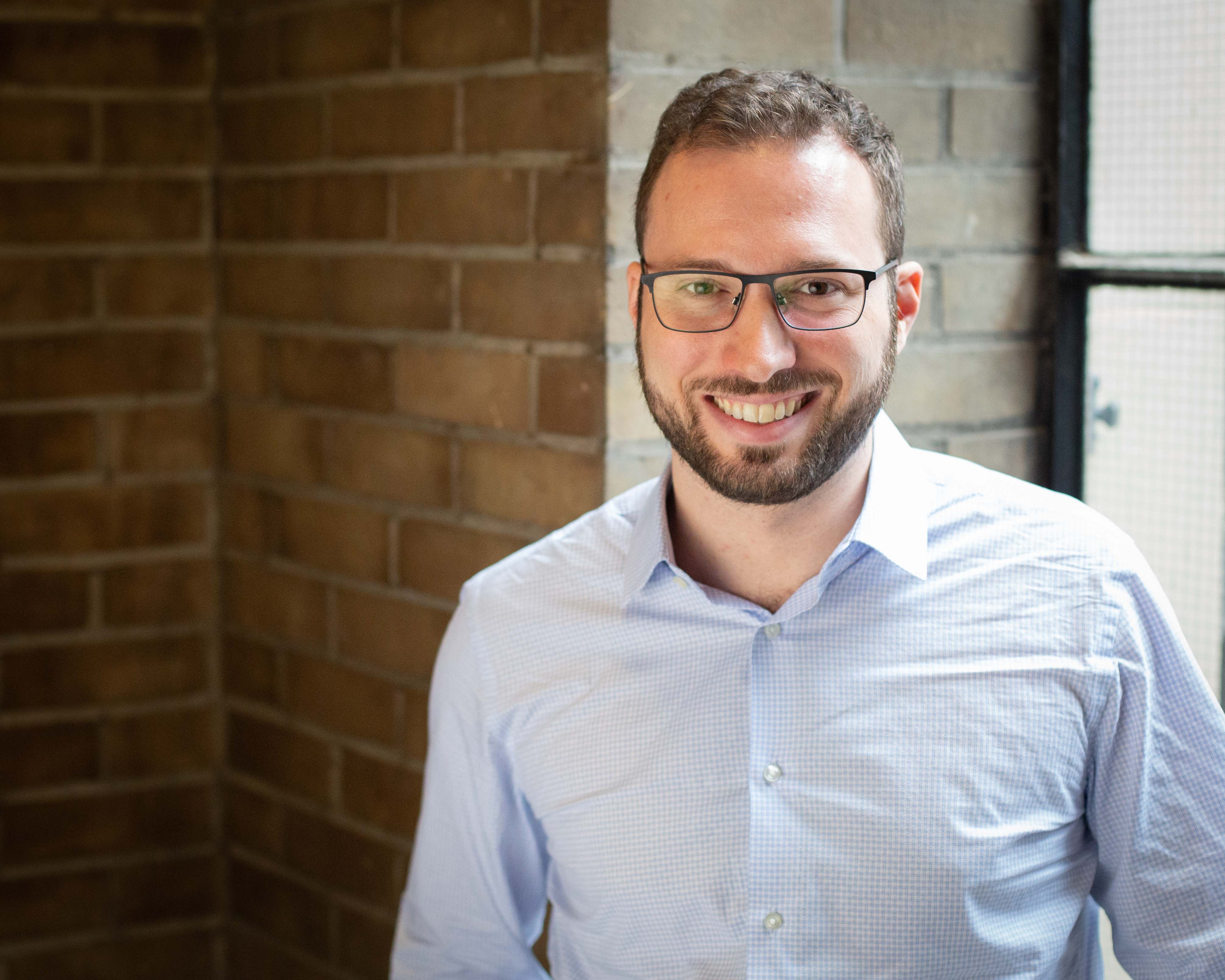
Patient, Pilot, Lawyer, MD Student: The Sky’s No Limit
“It’s difficult just to get into medical school, I had to apply five times,” says Shehata, a third-year medical student. “Then, I was fortunate enough to have a rotation at SickKids, which is a place a lot of people want to be. So, I just felt incredibly grateful.”
The hospital, one of the University of Toronto’s fully-affiliated partners, has had a large presence in Shehata’s life.
Born in 1982 when his mother was just 24 weeks pregnant, Shehata weighed just 660 grams. He was quickly transferred to SickKids.
“The odds weren’t necessarily in my favour. It was really touch and go. It still is for kids born at 24 weeks,” says the 36-year old. “The odds of survival today are roughly 60-70 per cent. Medicine keeps improving and the viability edge is coming down bit by bit. But the question was: what quality of life would I have?”
The first four months of Shehata’s life were spent at SickKids, until he was ultimately able to go home — by ambulance and with supplemental oxygen.
Through childhood, Shehata lived with respiratory issues including severe asthma. He recalls having to stay home from school often, connected to machines that delivered medication. He also underwent a number of ear, nose and throat surgeries — again, at SickKids.
At one point, school officials were concerned he might have a learning disability. He was required to repeat the third grade.
Thankfully, says Shehata, most of his health problems have cleared up, paving the way for the 36-year-old to pursue a variety of passions.
At 15, Shehata was on a plane home from Cairo, Egypt, where his parents had grown up. His father — a pilot — knew the aircraft’s captain and offered to bring the teenager to see the cockpit.
“This was before 9/11, when passengers could visit the cockpit. It was night time, I could see the northern lights and three aircraft up ahead. It was spectacular,” says Shehata. “I went back to my seat and said, ‘you know, Dad, I think I want to do this.’”
He soon became involved in Air Cadets, began to fly glider planes when he was 16 and then enrolled in Seneca College’s aviation program.
After graduation, Shehata spent the next few years working as a pilot, earning additional credentials and eventually, his airline pilot’s license — which is needed to be captain of a large commercial airliner. He also became a trainer, helping teach other commercial pilots to become flight instructors.
Then, the financial collapse of 2008 hit, taking its own toll on an industry still feeling the effects of 9/11. Shehata began to consider the possibility of returning to school to prepare for a second career.
Shehata married, and in lieu of wedding favours, the couple made donations in their guests’ names to two charitable organizations. One of them was SickKids Foundation.
“At the time, we didn’t think I would have any career other than aviation, let alone a career in medicine. We were just grateful for the lives we had,” he says.
When Shehata’s wife became pregnant, the couple learned early in the pregnancy their baby had a severe heart defect. They met with several medical professionals and were ultimately referred to SickKids, where they spoke with a paediatric cardiologist.
“He didn’t have any better news for us, it wasn’t that he could magically fix everything,” Shehata recalls. “It was the way in which he cared for us, the time he took, that made the difference. He spent about two hours — which I’m sure he didn’t have — and carefully explained everything, what things meant and what the options were. We unfortunately lost the pregnancy, but that interaction really helped shape my interest in medicine.”
Meanwhile, another interest was taking off for Shehata — law. He applied to medical school and law school at the same time. He was offered a spot at York University’s Osgoode Hall.
He deferred his acceptance for a year and used the time to pursue additional studies in science and strengthen his next application. In law school, Shehata nurtured his interest in medicine through health law courses.
Ultimately, the fifth time was a charm and Shehata was offered an interview at U of T’s MD program and was placed on the wait list around the same time he completed his articles to become a fully licensed lawyer. Not knowing if he would finally secure a seat in the class, Shehata looked for work as a lawyer. In the end, he received two offers — one for a job, the other for a spot in the MD Program.
“I applied five times to medical school, each time at U of T. But, I never believed I would get into my dream school,” he says.
Last week, the future physician shared his story via a thread on Twitter, thinking it might be of interest to his friends and family.
The response, he says, has been both unexpected and overwhelmingly positive. Shehata says many of the people who have reached out to him are parents and caregivers of premature babies or health-care providers. The Toronto Star has also picked up his story.
In being open about his experience, Shehata hopes to inspire the parents and caregivers of children with medical needs to balance realistic expectations with dreams for those kids to reach for the stars.
The other message is about the importance of preparation, as Shehata points to one of his heroes, Captain Sully Sullenberger, the captain of the plane involved in the miracle on the Hudson.
“If you look closely at what he and his crew did, there was a ton of preparation, skill, training and professionalism that went into what they were able to do that day,” he says. “Providing care is similar. We spend years training, whether we’re preparing to become a doctor, nurse or an allied health professional. My mother tells me one of the things she remembers most vividly from my time in hospital was the exceptional care I got from the doctors, as well as the nurses. And not just the skillful medical care, but the fact that the nurses would take me out and they would cuddle me. That human interaction, empathy and caring were, for her, a really big part of how I came to be here today.”
Now in clerkship, Shehata is working toward his dream of helping others through medicine and dreams where his future will lead next — dreams that will include continuing to reach for the sky.

Optimize this page for search engines by customizing the Meta Title and Meta Description fields.
Use the Google Search Result Preview Tool to test different content ideas.

Select a Meta Image to tell a social media platform what image to use when sharing.
If blank, different social platforms like LinkedIn will randomly select an image on the page to appear on shared posts.
Posts with images generally perform better on social media so it is worth selecting an engaging image.
Erin Howe
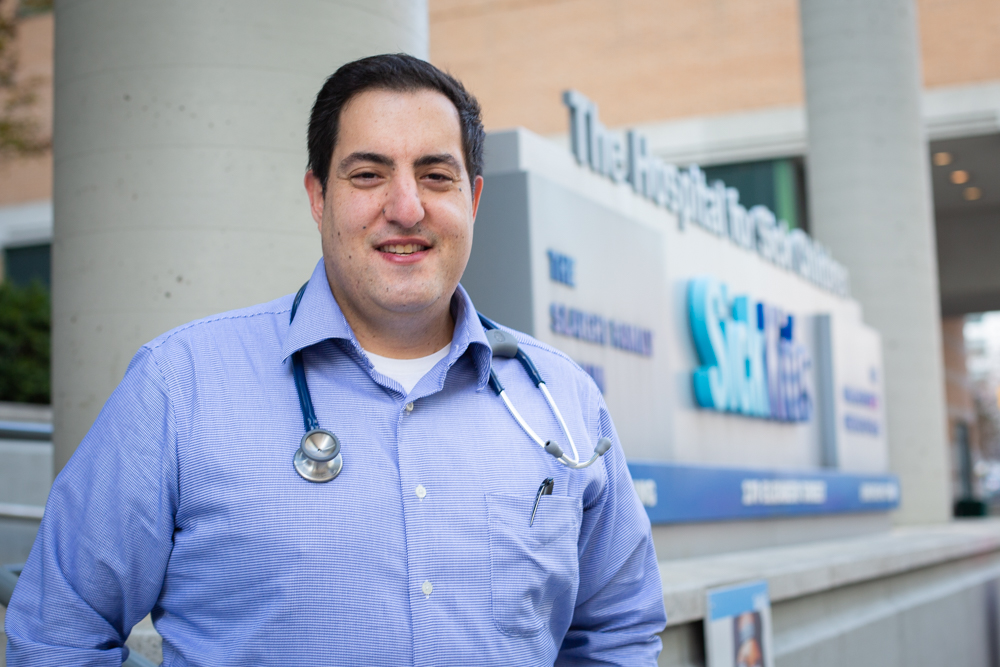
DFCM Chair Michael Kidd on His New Book About Physician Health
Doctors, residents, medical students and other health professionals can become so busy with work and life demands and pressures that often it’s their own health and well-being that suffers. In particular, research has shown that burnout can negatively impact patient care, workplace morale, career advancement, and more.
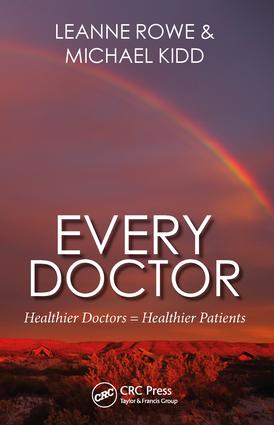
In recent years there have been more discussions about how to protect the mental, physical and emotional well-being of physicians and trainees and create more supportive work and educational environments for medical professionals and students.
Professor Michael Kidd, Chair of the University of Toronto Department of Family and Community Medicine (DFCM), has spent much of his career as a family physician leader focusing on the health and well-being of physicians. Most recently he has written a new book with co-author, Professor Leanne Rowe, Every Doctor: Healthier Doctors = Healthier Patients, that provides advice on how to thrive in medicine at a time of massive advances and changes in global health systems and medical services. Kidd recently spoke with writer Allison Mullin about physician health.
How would you describe the book and who you wrote it for?
We wrote this book for every doctor and doctor-in-training in the world – no matter their experience level. It provides advice on how doctors can look after their own physical and mental well-being. If we’re not healthy as doctors, we’re less able to be as effective as we can with patients.
It also looks at the health of workplaces and medical culture overall. Many books and articles focus on the personal physical and mental health and wellbeing of physicians; however, we’ve taken that further to say that if you work in a toxic environment or somewhere where colleagues are not respectful of one another, this affects our capacity to deliver high-quality care to our patients as well. Quite often, the culture of medicine can be harmful to many people: we’re not as supportive to each other as we should be and medical organizations aren’t always as constructive and effective as they could be. So we need to challenge the medical culture as a whole.
The book contains inspirational material from doctors who are authors and leaders from different parts of the world – people who have been willing to share their views, wisdom and experiences. And it contains advice that I wish I had when I was a medical student, rather than learning these things by trial and error or feeling bullied or harassed in the workplace.
Why was it important to include patients as part of the title?
If as doctors we don’t look after our own health and well-being, it’s going to be more of a challenge to look after our patients. We need to set an example for our patients: we expect our patients to eat healthy food, be physically active, not overuse alcohol, not smoke and so forth. It doesn’t go down very well, for example, if they see us smoking a cigarette while telling them to quit.
Also, the health of our institutions, hospitals and clinics impacts the health of our patients. Patients don’t want to enter a health system that is going to make them unhealthy, they want a system that is going to look after them, and hopefully, they’ll leave healthier than when they arrived.
The personal health and well-being of physicians and the culture of medicine seem to be larger topics of conversation. Why do you think that is? Is today’s world of medicine more challenging or are we just talking about it more?
I think it’s always been challenging. In the past, there was the attitude of, “I had it tough when I was a medical student or resident and you should have it tough too,” and people ended up working unsafe hours, making mistakes and having intolerably high levels of stress. At its worst extreme, this can result in doctors harming themselves or even committing suicide. Thankfully there’s been an increased awareness of suicide amongst healthcare professionals in recent years. This has made us take a hard look at ourselves and the culture that we live and work in and ask, “Is this healthy?” and “Are we supporting each other?” We need to support each other as professionals and peers but we often don’t. Instead there’s been a culture of bullying, harassment and occasionally of discrimination, sexism and stigma. In the 21st century, this isn’t acceptable and we need to call it out, reflect on our own behaviour, and support each other.
How is this changing for the better?
I think young people in our profession are driving many of the changes. And that’s a good thing because it reflects societal changes and expectations.
I also think we’ve had decades of opening our eyes to past human rights abuses which have occurred in medicine that we’re now confronting and tackling. The Truth and Reconciliation Commission of Canada process and report is a significant step forward. It’s pushed us at the Department of Family and Community Medicine to ask how we can contribute to that process and ensure that our faculty members and residents are culturally aware, sensitive and acting appropriately with Indigenous colleagues and patients, as well as with anyone who comes from a different background than their own. All these changes are signs of a healthier community and a healthier Canada.
I often advise students to have a five and ten-year plan. And include in that plan how they will continue working on their spiritual, physical and mental health as well. I also advise students to look at the values of teachers they respect and admire and adopt those values and behaviours for themselves.
Students and residents must also recognize that even though they’re at the very start of their medical career, the population and community still regard them as doctors. People are watching them, and it’s imperative as a medical practitioner to uphold your integrity in everything that you do and not to breach trust. I also advise them to spend time reflecting on what they’ve seen and learned each day and to celebrate the great joy of being a doctor and the great privilege it is to do what we do.

Optimize this page for search engines by customizing the Meta Title and Meta Description fields.
Use the Google Search Result Preview Tool to test different content ideas.

Select a Meta Image to tell a social media platform what image to use when sharing.
If blank, different social platforms like LinkedIn will randomly select an image on the page to appear on shared posts.
Posts with images generally perform better on social media so it is worth selecting an engaging image.
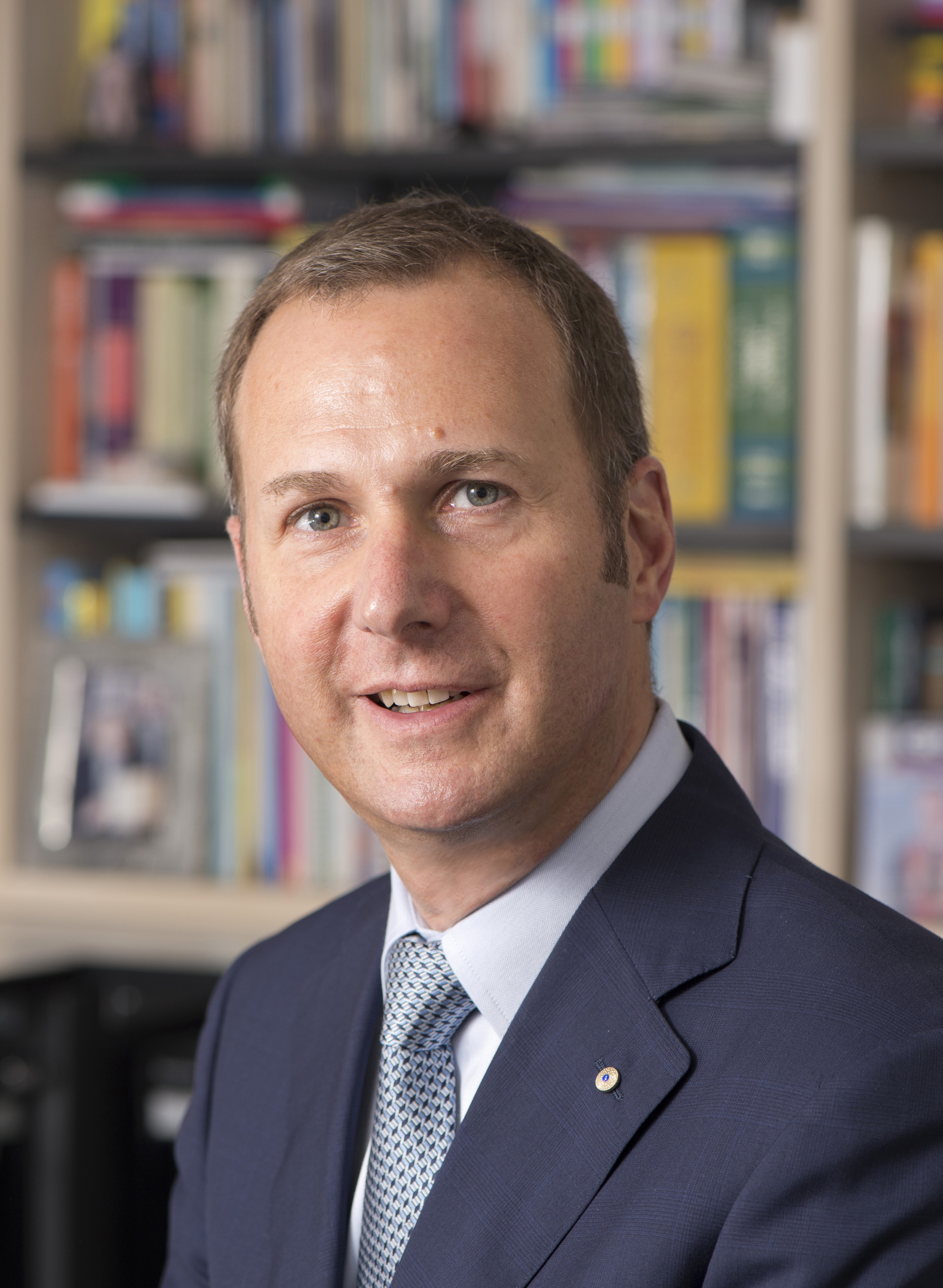
First Genetic Links to ADHD Discovered
A groundbreaking new study is the first to discover genome-wide risk factors associated with Attention Deficit and Hyperactivity Disorder (ADHD). The advance paves the way to a greater understanding of the cause of the disorder, and its links to other co-occurring mental health and medical conditions, including depression.
More than 100 scientists on five continents contributed data and ideas to the study, led by Danish and American researchers and published Nov. 27 in Nature Genetics. Contributors included three ADHD researchers from the University of Toronto, who shared genetic samples from 350 Canadian families.
“These are pivotal findings for ADHD and a testament to the power of international collaboration” says Jennifer Crosbie, an Assistant Professor in the Department of Psychiatry and a Clinician Scientist at The Hospital for Sick Children (SickKids). “By understanding the underlying genetics of ADHD, we can start to unpack the underlying neurobiology of this disorder. In time, with greater understanding of the genetic risks underlying the disorder, we can start to think about how to improve and personalize treatments, and how current treatments might affect other, related disorders.”
The study found 12 genetic risk factors associated with ADHD – the first of many, researchers predict.
“This is really the tip of the iceberg – the start of a much larger journey,” says Christie Burton, a Research Associate at SickKids, who helped write the paper along with Russell Schachar, a U of T Professor of Psychiatry. “There isn’t just one ADHD gene -- many genes and genetic variants will be involved. Each one probably contributes just a little risk. It’s a combination that pushes people over the threshold to an ADHD diagnosis.”
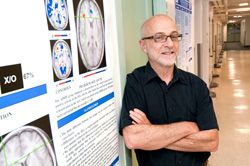
Scientists have long known that ADHD tends to occur alongside other mental health disorders and health problems such as depression and smoking, but they haven’t understood what caused the link. “But these results show there may be some genetic link underlying both,” says Crosbie.
Parents or patients may find it stressful to learn of a genetic link between ADHD and other mental health conditions. But the researchers say the discovery only helps to identify links that were already observed.
“It’s only going to help us,” says Crosbie. “We’ve taken a step closer to understanding how mental health disorders may overlap at a genetic level, which can lead to better assessment, monitoring and targeted treatment down the line.”
And genetics are only one piece of the disease puzzle, adds Burton: “There’s lots you can do to intervene. Genes are important but there are many factors that you can act upon to improve mental and physical health.”
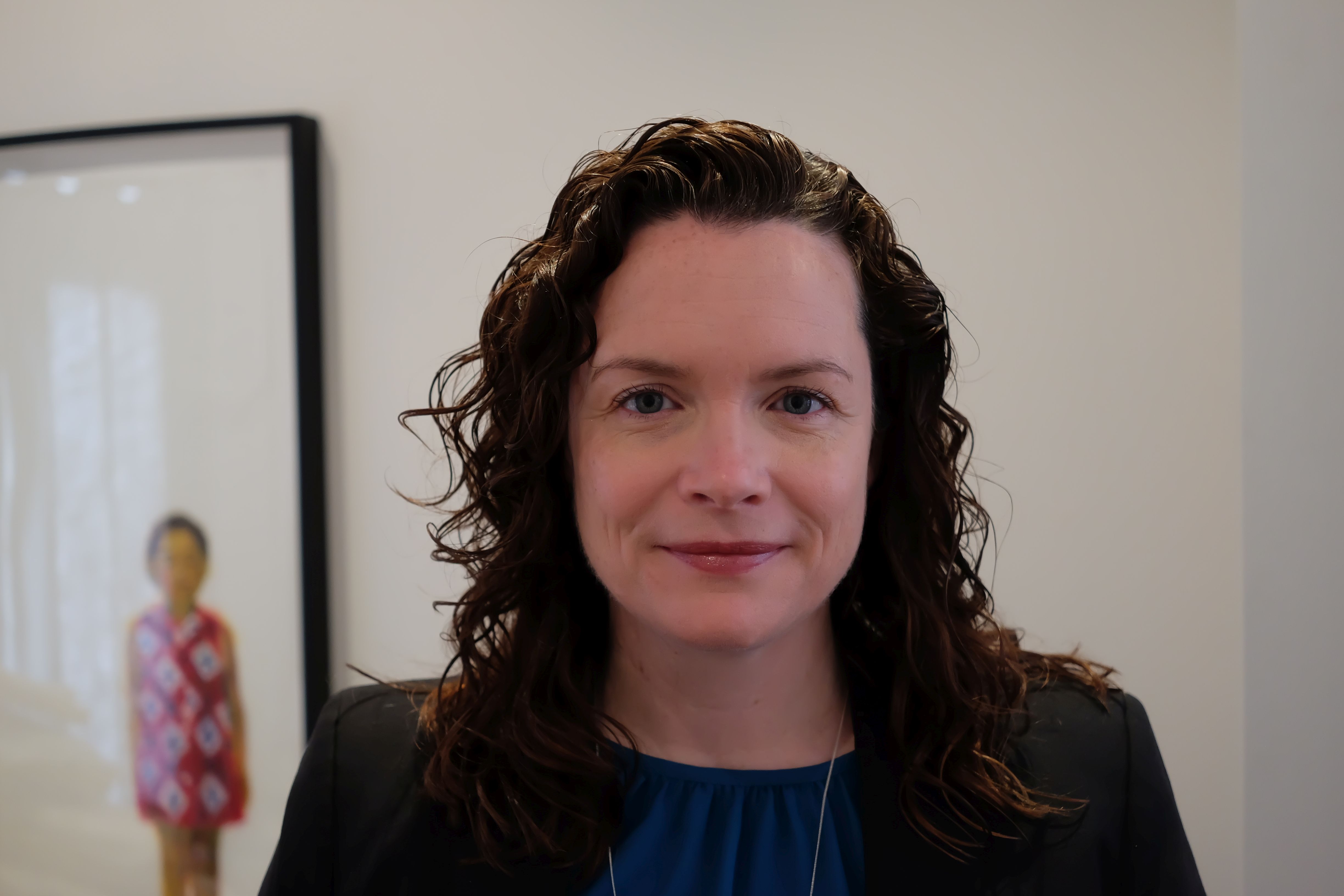
Beyond identifying more genetic links to ADHD, Crosbie says the next step is to study how environmental factors interact with genetic risk factors to increase or decrease the risk of developing ADHD.

Optimize this page for search engines by customizing the Meta Title and Meta Description fields.
Use the Google Search Result Preview Tool to test different content ideas.

Select a Meta Image to tell a social media platform what image to use when sharing.
If blank, different social platforms like LinkedIn will randomly select an image on the page to appear on shared posts.
Posts with images generally perform better on social media so it is worth selecting an engaging image.
Heidi Singer

In Science and in Art, Banting’s Legacy Lives On
Sir Frederick Banting’s only known painting of the lab where he discovered insulin was sold at auction yesterday for ten times its expected value. And fittingly, a portion of the sale price will go toward funding advances in diabetes research at U of T – just down the street from where the world-changing discovery was made almost a century ago.
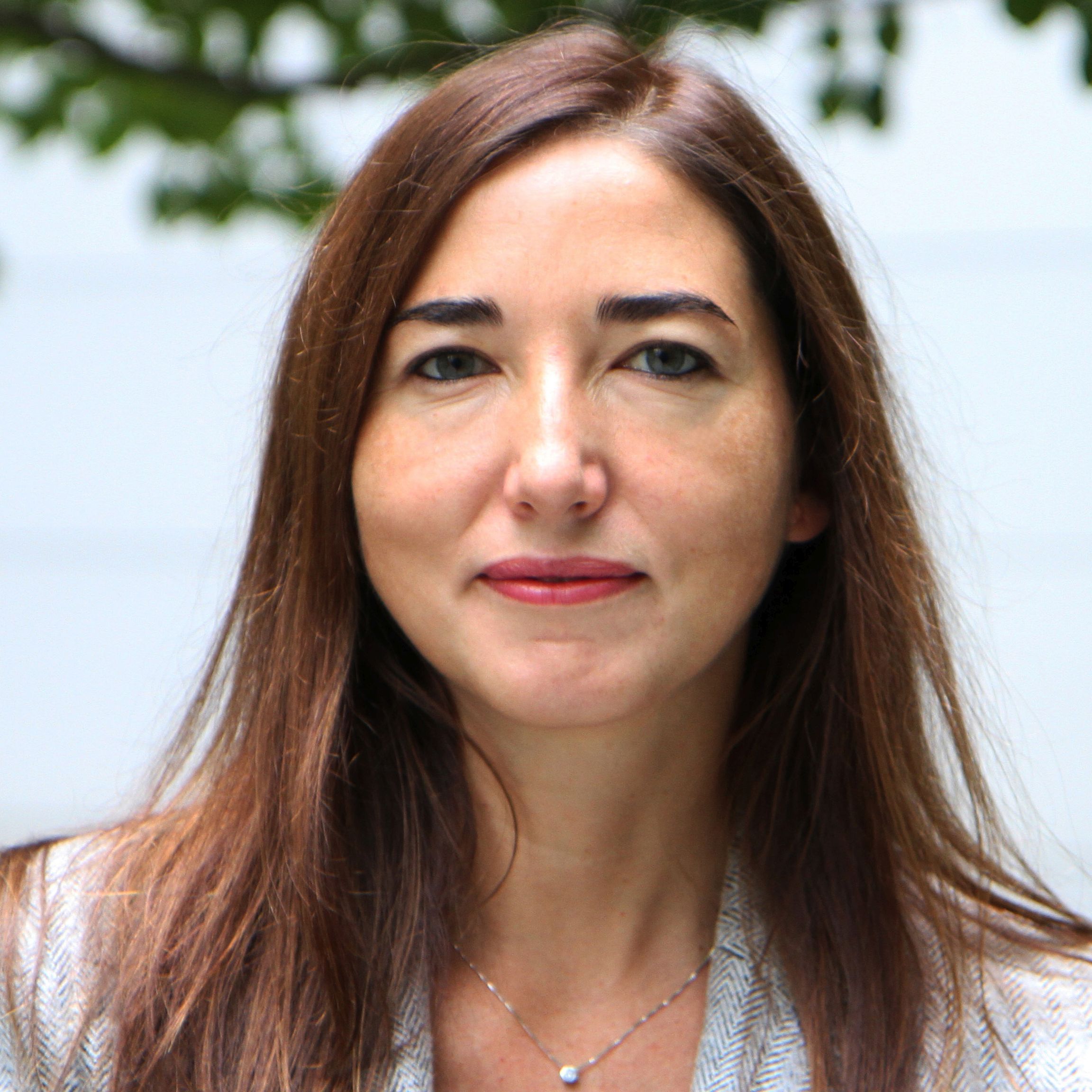
Banting created the painting, called simply The Lab, in 1925. Although an accomplished painter of landscapes, he rarely chose his scientific work as a subject.
Twenty bidders competed for the historic work, including U of T, but a determined mystery buyer outbid the university in the end, paying $313,250 for the art work over the telephone. To honour the painting’s subject and Banting’s legacy, Heffel Fine Art Auction House has pledged its commission of $53,250 to diabetes research at U of T.
“It is a privilege to be able to make this donation to The Banting & Best Diabetes Centre,” said Heffel’s Rebecca Rykiss. “At our auction previews across the country, we heard from countless enthusiasts, collectors and many affected by the disease just how meaningful this painting is. It’s not often that we have such a historically important work consigned to us and we are thrilled to honour the Nobel Prize winning scientist and his significant artistic career in this way.”
Several philanthropists had pledged to help U of T buy the painting so that it could be part of the upcoming centennial anniversary of the discovery of insulin. But the eventual winner appeared very determined to acquire the painting, said Professor Scott Mabury, U of T’s vice-president, university operations and vice-provost, academic operations.
“We were quite disappointed,” he said. “We tried. We gave it a great effort. Still, I hope in the fullness of time this painting will find its way into the 2021 celebrations of the discovery of insulin at U of T.”
The donation will further Banting’s legacy at U of T, where diabetes researchers like Maria Cristina Nostro are using techniques nobody could have envisioned in the early 20th century to create a goal that seems futuristic even today.
Toronto is home to robust research communities in both diabetes and stem cell research. Nostro straddles both fields in her quest to regenerate the pancreas, or at least its function. She is part of a worldwide cohort of scientists engineering stem cells to cure type 1 diabetes.
A native of Italy, Cristina was completing a post-doctoral fellowship in New York, studying stem-cell biology, when her supervisor, Professor Gordon Keller, was recruited to Toronto to lead the McEwen Centre for Regenerative Medicine. She soon found herself in the city where both insulin and stem cells were discovered.
“Toronto is a great place to do research on diabetes and stem cells,” she says. “With the huge legacy from insulin, we have the Banting & Best Diabetes Centre that’s connecting all the scientists doing diabetes research in the city. And there’s so much going on with stem cell research. It’s a perfect match.”
People with type 1 diabetes lack pancreatic beta cells, which play the crucial role of detecting sugar in the blood and signaling for the release of insulin. In the early 2000s, diabetes researchers first began experimenting with embryonic stem cells, which can potentially be turned into the cells associated with any organ. So far, scientists have used stem cells to create “immature” beta cells, which aren’t fully functional – but become more functional when placed in an animal’s body. As a result of this success, the first human trials with stem-cell derived pancreatic cells are now being conducted.
With human trials, there will be a need for more, and better functioning, pancreatic cells. Nostro and her team have made a major contribution to the process of creating them.
“We were among the first labs to understand how to efficiently create pancreatic cells,” she says. “And we’re collaborating with other Toronto scientists to find the best way to transplant the cells, making sure they’re not destroyed by the immune system and that they’re properly nourished right away by the body so they survive.”
Nostro is optimistic about improving treatment for type 1 diabetes in her lifetime.
“We need to be better than insulin,” she says. “We need something very safe and long-lasting. The beauty of regenerative medicine in diabetes is that we don’t have to recreate the entire pancreas. In type 1 diabetes, the pancreas works fine. We need to replenish the beta cells. If we can do that, we can cure diabetes.”

Optimize this page for search engines by customizing the Meta Title and Meta Description fields.
Use the Google Search Result Preview Tool to test different content ideas.

Select a Meta Image to tell a social media platform what image to use when sharing.
If blank, different social platforms like LinkedIn will randomly select an image on the page to appear on shared posts.
Posts with images generally perform better on social media so it is worth selecting an engaging image.
Heidi Singer

MD/PhD Students Looking for Mentors
For medical students interested in becoming clinician-scientists, the path forward is not always clear – but mentors can be enormously helpful. That’s why Faculty of Medicine students are hosting a symposium on the benefits of mentorship for those on this dual track.

The symposium is in conjunction with the Clinician Investigator Program’s annual Scientific Meeting at Toronto’s Chestnut Conference Centre Nov. 19 and 20, which showcases trainee research areas and offers career workshops.
“The long training path of a clinician-scientist necessitates forging many mentor-mentee relationships as we pass through the various stages of our training and career,” says Felipe Morgado, a second-year MD/PhD student who is co-organizing the event. “We’re constantly seeking wisdom and advice on matters outside our curriculum.”
Forty MD/PhD students are planning to attend Monday’s symposium, themed “Mentorship is a Two-Way Street.” There will be keynotes from Nicola Jones, a professor of Paediatrics and Physiology, and director of the Clinician-Investigator Program, and ophthalmologist Brian Ballios, a recent MD/PhD graduate.
There will also be a speed mentoring session, where students can ask a variety of clinician-scientists about networking and career planning.
Morgado, who has worked extensively with children on the autism spectrum, is interested in the intersection between health and mental health. He hopes to explore neurostimulation as a treatment for autism.
“There’s many phases to clinician-scientist training,” he says. “You have the challenges of going to residency where you’ll be away from research for a while. Also setting up a lab. A lot of parts of the career don’t get discussed in the curriculum. We want to talk to as many people as possible and get a sense of how their paths went.”
Co-organizer Alex Dhaliwal, also in his second year of the MD-PhD program, studied physics, math and biochemistry during his undergraduate years. He is excited about nanomedicine, and using breakthroughs in physics to advance medical imaging.
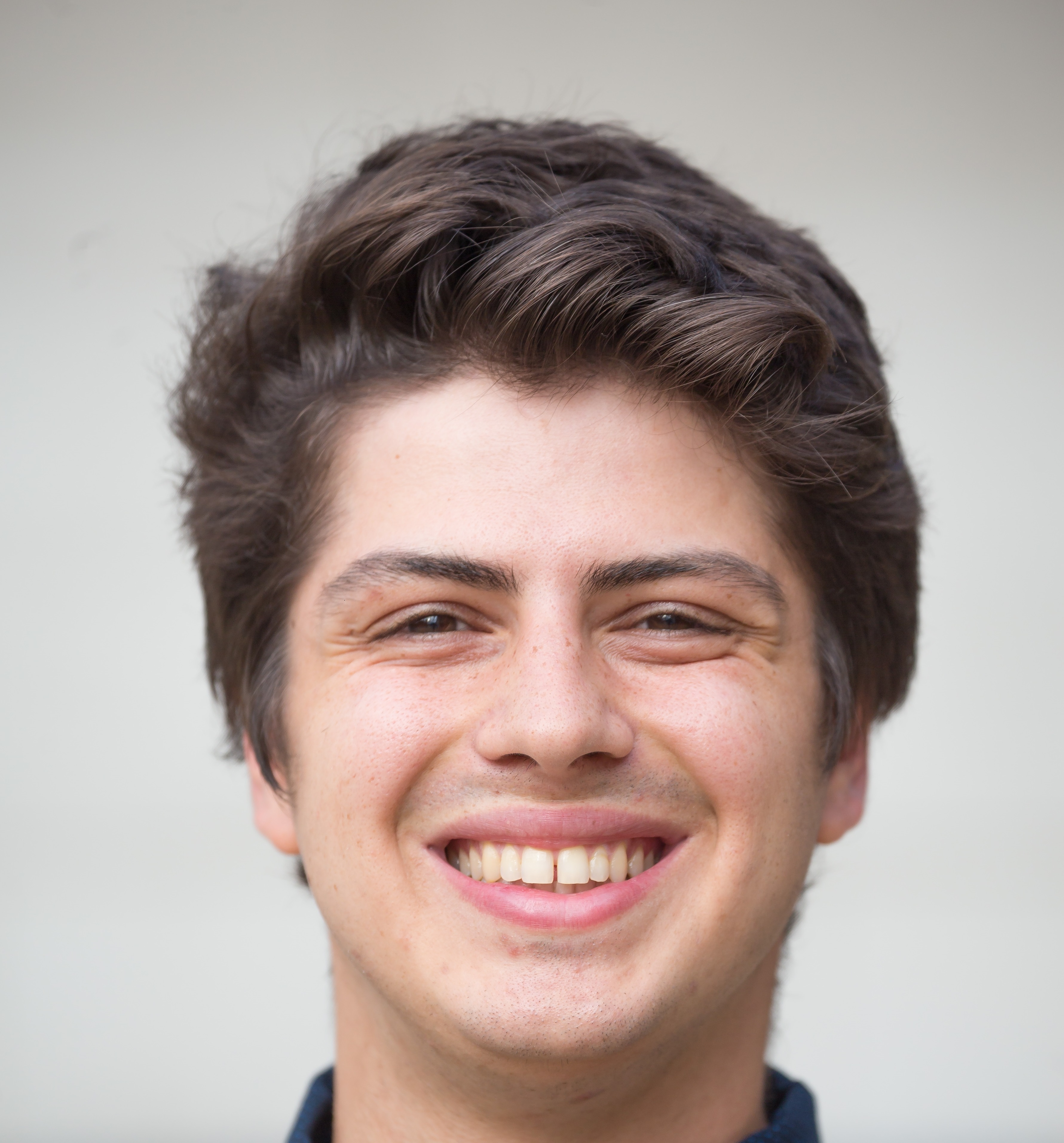
“The one thing clinician-scientists all seem to share is the passion for transcending boundaries and being able to communicate from different sides,” says Dhaliwal. “You have to carve out a niche where you can be that conduit.” Mentorship is crucial, he says: “Not a lot of people will be telling you that you’re necessarily doing the right thing because there are so many ways to get to where you’re going.”
Morgado and Dhaliwal say students are eager to find mentors, and that more clinician-scientists are always needed. To learn more about becoming a mentor, contact Karen Lee in the Faculty's Alumni Relations Office: Kare.lee@utoronto.ca.

Optimize this page for search engines by customizing the Meta Title and Meta Description fields.
Use the Google Search Result Preview Tool to test different content ideas.

Select a Meta Image to tell a social media platform what image to use when sharing.
If blank, different social platforms like LinkedIn will randomly select an image on the page to appear on shared posts.
Posts with images generally perform better on social media so it is worth selecting an engaging image.
Heidi Singer

Risk of Suicide Double After Concussion: U of T Researcher
A new study by researchers at the University of Toronto and other universities is highlighting the association between concussions and the risk of suicide. The study, published in JAMA Neurology this week, found that the risk of suicide is twice as high for people who had at least one concussion compared to those who had not.
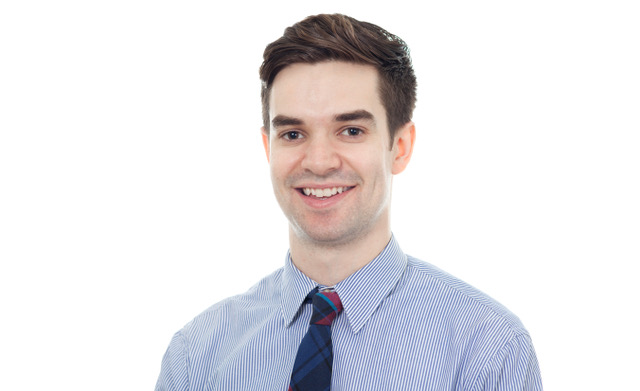
Dr. Michael Fralick, a general internist and trainee in the Department of Medicine’s Eliot Phillipson Clinician Scientist Training Program, led the research team that conducted a systematic review and meta-analysis of several other studies that explored the association between suicide and concussion. They found there was a heightened risk of both suicide and suicidal ideation following a concussion or other forms of mild traumatic brain injury (TBI).
Growing up playing contact sports like hockey, soccer and rugby, Fralick saw many of his friends sustain concussions. He also observed the mounting reporting of athletes who died by suicide following concussions and brain injury. Skeptical at first of the association between concussion and suicide, Fralick and his team decided to study the topic.
The research team – including researchers from University of Saskatchewan, University of California, San Diego, Harvard Medical School and Ohio State University – reviewed data from 17 studies for more than 700,000 people diagnosed with concussion or mild TBI. Most of the studies included did not differentiate between the number of concussions an individual sustained and their respective rate of suicide risk.
“There were a few studies that included the number of concussions, and they suggested that multiple concussions were associated with an even higher rate of suicide-related outcomes,” says Fralick.
Fralick emphasizes that although people who have experienced a concussion are at a heightened risk of suicide and suicidal ideation, the reported rate of death by suicide was extremely low at less than one per cent.
“It is important to note that the vast majority of people who have a concussion do not experience a suicide-related outcome, and I do hope that is reassuring to people,” he says.
The study contributes to a body of research that explores the outcomes and side-effects of concussions and TBIs. Noting that concussions are both common and frequently preventable, Fralick says more research is needed to address the risk of suicide following concussions and to identify strategies to reduce this risk.
“The burden of preventing concussions needs to be shared with policy-makers and professional organizations,” says Fralick. “It is encouraging to see athletic organizations have raised the age for some contact sports and implemented concussion policies to ensure athletes are removed from play if they have a suspected concussion.”
Individuals who have sustained a concussion and are experiencing anxiety and depression are urged to seek medical attention.
For those who play contact sports, Fralick adds: “Wearing a helmet and using a mouthguard can help reduce the risk of concussion. If someone has a concussion, it’s really important to rest, stay hydrated, and avoid alcohol.”

Optimize this page for search engines by customizing the Meta Title and Meta Description fields.
Use the Google Search Result Preview Tool to test different content ideas.

Select a Meta Image to tell a social media platform what image to use when sharing.
If blank, different social platforms like LinkedIn will randomly select an image on the page to appear on shared posts.
Posts with images generally perform better on social media so it is worth selecting an engaging image.
Brianne Tulk

New Canada Research Chairs
Five Faculty of Medicine researchers in molecular genetics, immunology and medical biophysics, have been awarded new Canada Research Chairs.
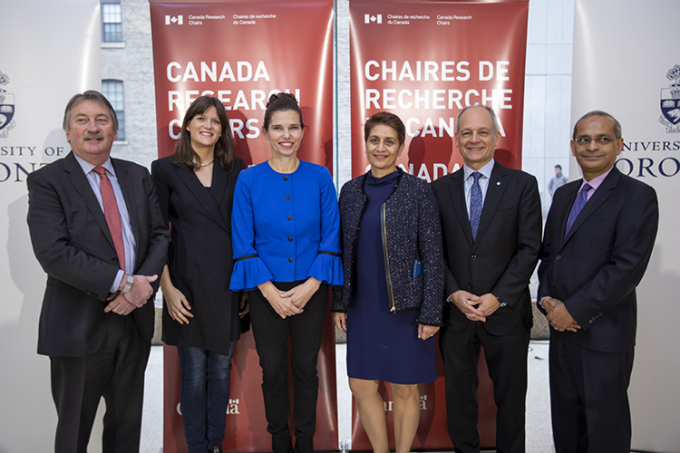
In an announcement made at the C. David Naylor Student Commons in the Medical Science Building, Kirsty Duncan, the federal science minister, revealed the university will be home to 21 new and renewed chairs as a result of the program’s most recent competition.
The total value of the funding associated with the U of T chairs is $19 million.
“It’s a source of great pride that the University of Toronto boasts so many great researchers who lead on discoveries that range from the microscopic to the galactic,” said Duncan, who was formerly a U of T researcher herself in health studies.
Created two decades ago, the Canada Research Chairs program is the centrepiece of the federal government’s strategy to make Canada a leader in research and development. The program seeks to attract and retain researchers in engineering and the natural sciences, health sciences, humanities and social sciences.
U of T holds the largest allocation of research chairs in the country, with some 275 chairs awarded to the university and its partner hospitals. Of the 21 new and renewed chairs awarded to U of T, half went to women and nearly 60 per cent supported emerging researchers.
Duncan thanked U of T and other post-secondary institutions for taking meaningful steps to boost the numbers of underrepresented groups in the federal program, citing numbers from the most recent competition.
“U of T supports this initiative wholeheartedly,” said U of T President Meric Gertler, adding the university is implementing the recommendations of an equity, diversity and inclusion working group that was struck last year to evaluate U of T’s research apparatus.
“We hold these principles as central to our public mission and our commitment to academic excellence.”
Duncan also used today’s U of T event to announce a plan to invest $210 million over the next five years to add 285 additional chairs to the federal program. That includes an additional supplement of up to $20,000 per chair to assist researchers who are in the early stages of their careers.
“The research is really for the benefit of Canadians and the training opportunities it provides for students,” said Vivek Goel,U of T’s vice-president of research and innovation. “In less than two decades, the Canada Research Chairs program has transformed research in this country.”
Rama Khokha’s research certainly qualifies as work that could benefit Canadians. A professor in the Department of Medical Biophysics and a senior scientist at the Princess Margaret Cancer Centre, Khokha said her Tier 1 Canada Research Chair in Adult Tissue Stem Cell Niches will be used to “fuel new ideas, especially around the prevention of breast cancer and how to create novel therapies for women with breast cancer.”
Brian Ciruna, a professor in the Department of Molecular Genetics and a researcher at the Hospital for Sick Children, was named Tier 1 Canada Research Chair in Developmental Genetics and Disease Modelling. Ciruna’s work on zebrafish helps to elucidate how abnormal cell polarity contributes to various diseases and the spread of cancer.
CRISPR researcher Alan Davidson, was named Tier 1 Canada Research Chair in Bacteriophage-Based Technologies. Davidson is also a Molecular Genetics professor studying viruses that infect bacteria.
Dana Philpott, a professor in the Department of Immunology was named Tier 1 Canada Research Chair in Microbe-host Interactions in Intestinal Homeostasis. Philpott studies proteins involved in adaptive immunity in bacterial infection and auto-immune disease.
And another Molecular Genetics professor, Mei Zhen, studies the nervous system in worms to address the underlying cellular mechanisms of human disorder in neural development.Zhen, also a senior investigator at the Lunenfeld-Tanenbaum Research Institute, was named a Tier 1 Canada Research Chair in Neural Circuit Development and Function.
As well, four Faculty of Medicine professors had their chairs renewed: Richard Bazinet (Tier 2 Canada Research Chair in Brain Lipid Metabolism); Daniel Durocher (Tier 1 Canada Research Chair in Molecular Genetics of the DNA Damage Response); Jason Fish (Tier 2 Canada Research Chair in Vascular Cell and Molecular Biology); and Rosemary Martino (Tier 2 Canada Research Chair in Swallowing Disorders).
In total, the federal government invested $156 million in 187 new and renewed research chairs through its most recent competition. They were awarded to 49 institutions across the country.

Optimize this page for search engines by customizing the Meta Title and Meta Description fields.
Use the Google Search Result Preview Tool to test different content ideas.

Select a Meta Image to tell a social media platform what image to use when sharing.
If blank, different social platforms like LinkedIn will randomly select an image on the page to appear on shared posts.
Posts with images generally perform better on social media so it is worth selecting an engaging image.

